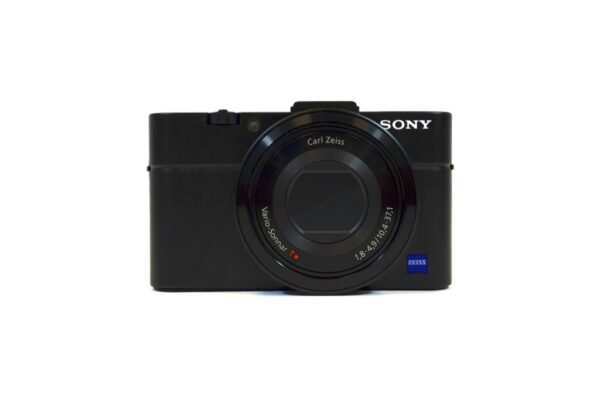
Featured by TIME Magazine as one of 50 best inventions of 2012, the Sony RX100 compact camera has a refreshed sibling in 2013, the RX100 II (DSC-RX100M2). Announced in June this year and available since July, the RX100 II adds a few important upgrades, but at the same time builds on the success of its older sibling.
The RX100 II continues to be based on the same sleek, compact design of the RX100. It also retains an awesome 1″-sized sensor. The f/1.8 with 3.6x zoom Carl Zeiss Vario-Sonnar T* lens optics are unchanged. They both take 20MP stills, and records in RAW format. They have the same built-in flash and 1229K LCD screen. The RX100 II has the same focus modes, scene modes, and pretty much all the software functions and user-interface remains the same. In fact they are so similar you’d easily mistake one for the other.
Yet, the RX100 II features a bunch of important upgrades from its older sibling.
- The 1″ sensor has been upgraded to a back-illuminated Exmor R CMOS sensor. Sony says this sensor is 40% more sensitive in low-light, and will allow for faster auto-focus. Maximum native ISO has moved up one stop to 12,800 from 6,400.
- The LCD screen is now an articulating type, allowing you to angle it upward 84 degrees and downward 45 degrees (but not flip or swivel side-to-side) for easier composition.
- You don’t need Eye-Fi cards anymore. There is now Wi-Fi and NFC built-in, enabling easy photo transfer between camera and smart devices (iOS and Android smartphone and tablets). You can also remote-control shoot the camera from a smart device. You’ll need Sony’s PlayMemories Mobile app, available free from both the iOS App Store and Google Play Store.
- The new Multi Interface Shoe can be used to support an external flash, an electronic viewfinder, or stereo microphone.
These four upgrades come at a cost. The RX100 II’s launch price is US$100 more than the RX100 (US$750 vs US$650). The RX100 II does not replace the RX100, and they are both sold alongside each other. (In Singapore, the RX100 II launches at the RX100’s original price, and instead the RX100’s price has been reduced.)
The RX100 II does take a small hit in the size and weight department. It’s now slightly heavier (281 g vs 213 g) and slightly thicker (38 mm vs 35 mm) compared with the RX100.
There are a few minor changes. Firstly, the HDMI port which used to be on the bottom of the camera, right next to the tripod screw mount, has now been moved up next to the USB port on the right side of the camera. It’s a lot more useful this way, because you otherwise can’t use the HDMI connector when the previous RX100 was mounted on a tripod.
Battery life has been just slightly improved, from 330 shots to 350 shots.
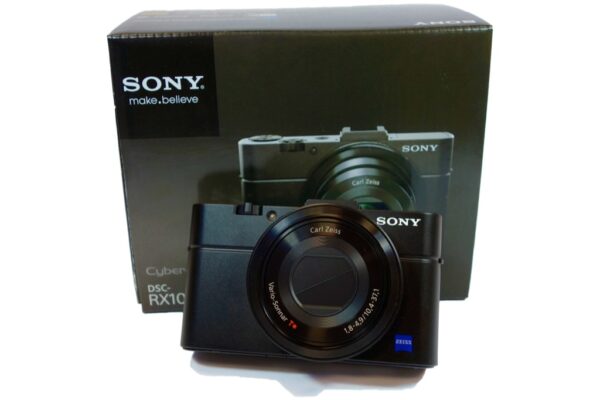
What Is The RX100 II?
If you’re not familiar with the RX100, I’ve probably lost you. But you can read up on earlier RX100 review. To recap, the RX100 was a truly outstanding compact camera. It may look like a point-and-shoot camera, but its capabilities and image quality is way beyond the typical point-and-shoot camera.
The f/1.8 lens is really awesome too, capable of shooting some very impressive bokeh shots. The aperture, however, closes up a little too much at the 3.6x zoom end at f/4.9. At the wide end, the f/1.8 aperture allows for plenty of beautiful bokeh shots, and in combination with the 1″ back-illuminated sensor, the RX100 II produces really awesome photos.
The RX100 II shoots in RAW, JPEG, or both, at resolutions up to 20.0MP. There are plenty of shooting modes. Auto-focus is fast, and continuous shooting at up to 10fps.
The addition of built-in Wi-Fi makes it really convenient to share photos you’ve just shot on the RX100 II. With the PlayMemories Mobile app, you can instantly copy your photos to your phone, or share them with social media services like FaceBook. The Wi-Fi setup is practically automatic too, using NFC to configure the Wi-Fi connection (only on NFC-enabled smartphones, of course).
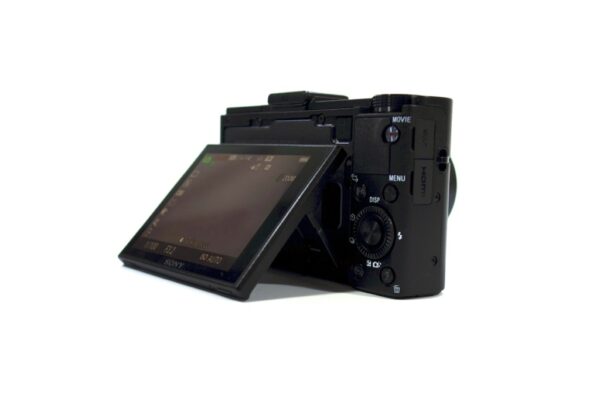
The new articulating LCD screen doesn’t swivel horizontally, or flip over to let you take a self-portrait. But it will tilt 84 degrees upward and 45 degrees downward. It doesn’t seem like a lot, but it will make it easier to take shots from awkward angles, and those times definitely will come. (The Wi-Fi remote shooting capabilities extend even further your reach into difficult positions.)
Speaking of the LCD screen, it’s packed with 1229K of WhiteMagic TFT pixels that works pretty well even in bright daylight. On top of the usual red, green and blue pixels per dot, WhiteMagic gets you an extra white pixel.
The RX100 II focuses fast, has very low shutter latency, and pretty quick shot-to-shot time. This will enable you to follow quick action without missing a beat. I’m not so much talking about sports, but simple everyday things like photographing little children. You know how it is with most low-end cameras, they are too slow that by the time the camera photographs the scene, the action is over. The RX100 II will not disappoint you here.
Conclusion
Are the RX100 II’s improvements worth the price difference, and the additional weight and slight increase in size? That depends, obviously, a lot on your personal priorities.
The RX100 II will let you shoot photos in more challenging conditions, and ought to produce better results. The reason why you want a camera like the RX100 II is to take great photos. All the improvements in the RX100 II support that goal. It’s slightly bigger, and it’s a little heavier, but overall it’s still a really great compact camera you can easily carry with you everywhere.
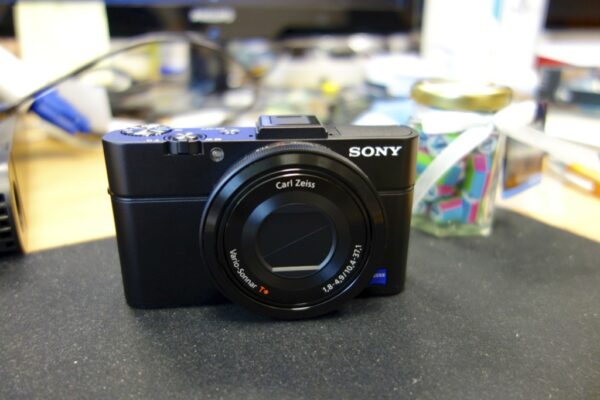
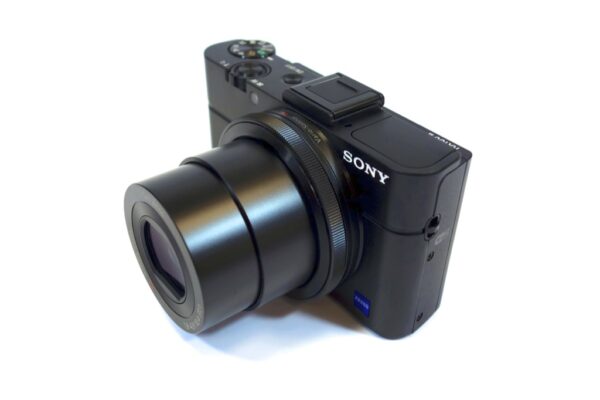
1 thought on “Sony DSC-RX100M2 Compact Camera Upgrade”
View Comment Policy